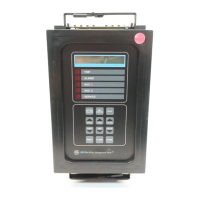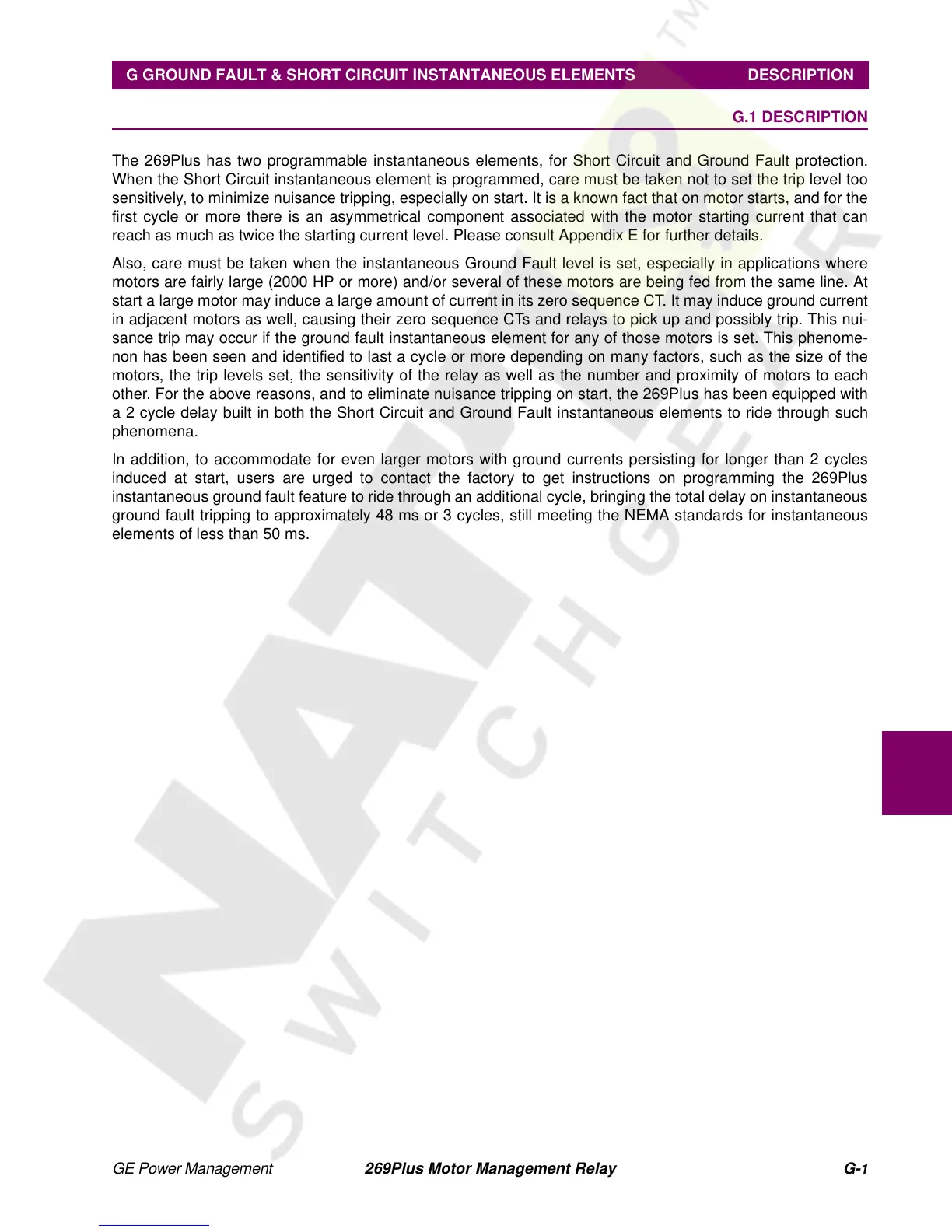GE Power Management 269Plus Motor Management Relay G-
1
G GROUND FAULT & SHORT CIRCUIT INSTANTANEOUS ELEMENTS DESCRIPTION
G
APPENDIX GG GROUND FAULT & SHORT CIRCUIT INSTANTANEOUS ELEMENTS G.1 DESCRIPTION
The 269Plus has two programmable instantaneous elements, for Short Circuit and Ground Fault protection.
When the Short Circuit instantaneous element is programmed, care must be taken not to set the trip level too
sensitively, to minimize nuisance tripping, especially on start. It is a known fact that on motor starts, and for the
first cycle or more there is an asymmetrical component associated with the motor starting current that can
reach as much as twice the starting current level. Please consult Appendix E for further details.
Also, care must be taken when the instantaneous Ground Fault level is set, especially in applications where
motors are fairly large (2000 HP or more) and/or several of these motors are being fed from the same line. At
start a large motor may induce a large amount of current in its zero sequence CT. It may induce ground current
in adjacent motors as well, causing their zero sequence CTs and relays to pick up and possibly trip. This nui-
sance trip may occur if the ground fault instantaneous element for any of those motors is set. This phenome-
non has been seen and identified to last a cycle or more depending on many factors, such as the size of the
motors, the trip levels set, the sensitivity of the relay as well as the number and proximity of motors to each
other. For the above reasons, and to eliminate nuisance tripping on start, the 269Plus has been equipped with
a 2 cycle delay built in both the Short Circuit and Ground Fault instantaneous elements to ride through such
phenomena.
In addition, to accommodate for even larger motors with ground currents persisting for longer than 2 cycles
induced at start, users are urged to contact the factory to get instructions on programming the 269Plus
instantaneous ground fault feature to ride through an additional cycle, bringing the total delay on instantaneous
ground fault tripping to approximately 48 ms or 3 cycles, still meeting the NEMA standards for instantaneous
elements of less than 50 ms.

